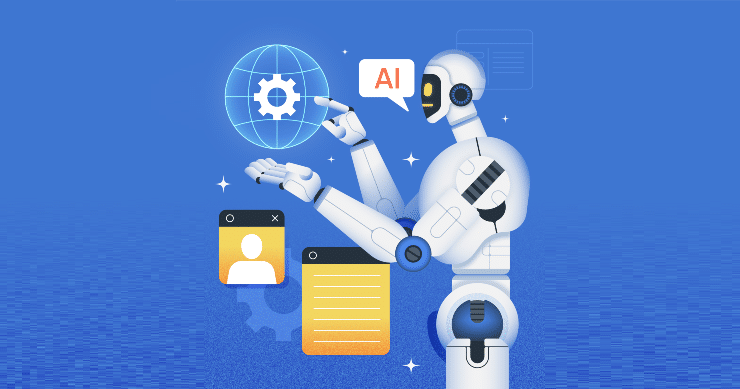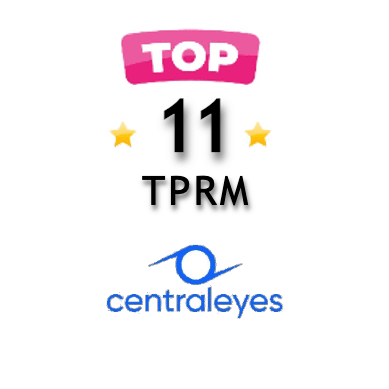The concept of “AI governance for GRC” presents an intriguing paradox. After all, isn’t GRC supposed to encompass governance, including overseeing AI systems?
This seeming redundancy demands a closer look at the changing governance landscape in the AI era. While GRC frameworks have long been established to regulate the whole gamut of organizational operations, the advent of AI presents complexity that necessitates a complete reevaluation of the “G” in GRC (and possibly some new standards?).
AI blurs the lines of traditional governance frameworks. Unlike static processes and predictable systems, AI can evolve, adapt, and even make autonomous decisions. If it (AI) thinks differently and acts differently, it needs to be governed by a different set of rules.

Governance Redundancy?
At first glance, the phrase “AI governance for GRC” may cause a chuckle in GRC pros. But before you raise your eyebrows at the concept of “AI governance for GRC” and dismiss it with a casual “Isn’t AI governance supposed to be inherent within the realm of GRC?” consider the following:
AI governance addresses specific challenges that traditional GRC frameworks may not fully solve. These challenges include guaranteeing algorithm fairness, preserving AI model transparency, and accountability for AI-driven results. By including AI governance as a unique component of GRC, firms can create specific policies, processes, and controls to meet this complexity.
Organizations that recognize AI governance as a unique element of GRC frameworks can proactively manage risks, ensure compliance, and promote responsible and ethical usage of AI technologies.
Fairness, Explainability, Accountability, and Transparency
Effective AI governance is built on fairness, explainability, accountability, and transparency, which limit risks associated with AI implementation.
- Fairness ensures that AI systems do not perpetuate human biases or discriminate against specific people or groups.
- Explainability allows humans to understand the reasoning behind AI-driven decisions.
- Accountability holds organizations accountable for an AI system’s actions.
- Transparency illuminates the inner workings of AI systems, promoting communication.
The Imperative of AI GRC
Organizations require AI GRC to ensure the responsible, realistic, and appropriate usage of AI technologies. AI GRC enables firms to comply with changing laws and regulations, manage uncertainty and risk, adhere to ethical standards, foster trust and transparency, provide strategic business alignment, and enable agility in quickly changing AI landscapes.
AI GRC is the ability to achieve the objectives of AI models and their use reliably, address uncertainty and risk in the use of AI, and act with integrity in the ethical, legal, and regulatory use of AI in the organization’s context.
AI Governance
AI governance includes managing and guiding AI-related projects and ensuring that AI technology and models align with the company’s aims and values. Clear policies, methods, and decision-making frameworks must be developed to ensure proper management of AI. These frameworks enable a corporation to achieve objectives reliably while ensuring that the AI models’ objectives and designs are carried out as anticipated.
AI governance encompasses strategic planning, stakeholder engagement, and monitoring performance and AI usage to ensure that AI initiatives do what they’re supposed to and help the organization achieve its overall goals.
AI Risk Management
Risk management in AI recognizes, assesses, and manages the uncertainty involved with developing, using, and maintaining AI systems. These dangers range from technological (security breaches or system failure) to ethical (algorithmic bias or privacy infringement). Risk management is about dealing with unpredictability. Given their potential to disrupt an organization’s operations or reputation, AI-related hazards necessitate thorough risk assessments and powerful risk mitigation techniques.
Artificial Intelligence Compliance
Compliance is a vital component of AI implementation. As AI technology advances, so does the regulatory landscape governing its application. In artificial intelligence, compliance refers to following appropriate legal requirements, industry standards, and ethical principles.
This includes adhering to data privacy standards such as GDPR and ethical AI practices to ensure the openness, fairness, and responsibility of AI systems.
Start Getting Value With
Centraleyes for Free
See for yourself how the Centraleyes platform exceeds anything an old GRC
system does and eliminates the need for manual processes and spreadsheets
to give you immediate value and run a full risk assessment in less than 30 days
Benefits of a Structured Approach to AI GRC
In light of these challenges, AI GRC emerges as a critical imperative for organizations seeking to responsibly navigate the complexities of AI adoption. By establishing AI governance frameworks, organizations can:
- Ensure compliance with evolving laws and regulations, safeguarding against legal issues, financial penalties, and reputational damage.
- Manage uncertainty and risk associated with unintended consequences, including biased decisions and privacy breaches, through effective risk management strategies.
- Uphold ethical standards to ensure fair and unbiased AI deployment, mitigating the perpetuation of harmful biases.
- Deliver trust and transparency by demonstrating the trustworthiness and transparency of AI systems, which is essential for maintaining customer and stakeholder confidence.
- Align AI usage with strategic goals, ensuring that AI initiatives contribute to organizational objectives without deviating into potentially harmful or unproductive areas.
- Enabling agility in the face of rapidly changing regulatory landscapes allows organizations to adapt and prepare proactively for future regulatory changes.
The Importance of Standards for AI Governance in GRC
AI governance involves overseeing the ethical and effective use of artificial intelligence technologies. But how do we achieve this? Enter the world of artificial intelligence standards.
Standards provide a foundational framework for developing, deploying, and governing AI systems. They’re about setting common guidelines and technical specifications that everyone can agree on. Think of them as the rulebook for responsible AI usage.
Why are these standards so important? They promote transparency, mitigate risks, and address concerns about fairness, privacy, and accountability. Without them, we’d be navigating a minefield blindfolded.
But it’s easier said than done. The AI ecosystem is global, and the regulatory language and approaches vary significantly across borders. This creates a patchwork of rules that can be difficult for organizations to navigate.
AI-Related Standards
Now, let’s discuss the key types of standards that form the bedrock of AI governance within GRC:
- Basic Standards
Think of basic standards as the building blocks of AI governance. They develop common taxonomies and terminologies, which make discussions about AI systems more consistent. Two important examples are ISO/IEC 22989, which describes more than 110 AI concepts, and ISO 23053, which gives a framework for explaining AI systems that use Machine Learning (ML). These standards pave the way for the development of higher-level standards.
- Development Standards
Development or process standards are the scaffolding for responsible development and deployment of AI systems within organizations. These standards define best practices in management, process design, quality control, and governance. Noteworthy examples include:
- ISO/IEC CD 42001: guides organizations in integrating AI management systems
- ISO/IEC 38507: offers governance guidance for organizations using AI systems
- ISO 23894: manages risks connected to the development and use of AI.
- Measurement Standards
Measurement standards are the yardsticks used to gauge the performance and efficacy of AI systems. These standards provide universal methodologies for assessing various aspects of AI systems’ performance. Notable examples include:
- ISO/IEC DTS4213: clarifies methodologies to evaluate the performance of classification algorithms
- ISO/IEC TR 24027: provides metrics to assess bias in AI-enabled decision-making.
- Performance Assessment Standards
Performance assessment standards are the benchmarks against AI systems’ operational efficacy. These standards establish thresholds, requirements, and expectations for the satisfactory operation of AI systems. Noteworthy examples include:
- IEEE 2937: provides methodologies for assessing the performance of AI servers and server clusters
- ISO/IEC AWI 27090: addresses information security risks in AI systems.
Centraleyes at the Forefront of AI in GRC
When considering the ideal GRC platform, the search is on for a solution that handles current difficulties and is built to handle future AI technology. This solution will reshape governance, risk management, and compliance mapping approaches.
Centraleyes, a market leader in GRC platforms, is focused on integrating AI into risk management. Centraleyes offers the fundamental elements of GRC architecture, including a board portal for governance, strategy and performance management, comprehensive reporting capabilities, and advanced risk quantification and visualization.
Centraleyes is built on a Low-Code concept, which enables businesses to respond quickly to changes without being hampered by rigid GRC processes.
Start Getting Value With
Centraleyes for Free
See for yourself how the Centraleyes platform exceeds anything an old GRC
system does and eliminates the need for manual processes and spreadsheets
to give you immediate value and run a full risk assessment in less than 30 days






